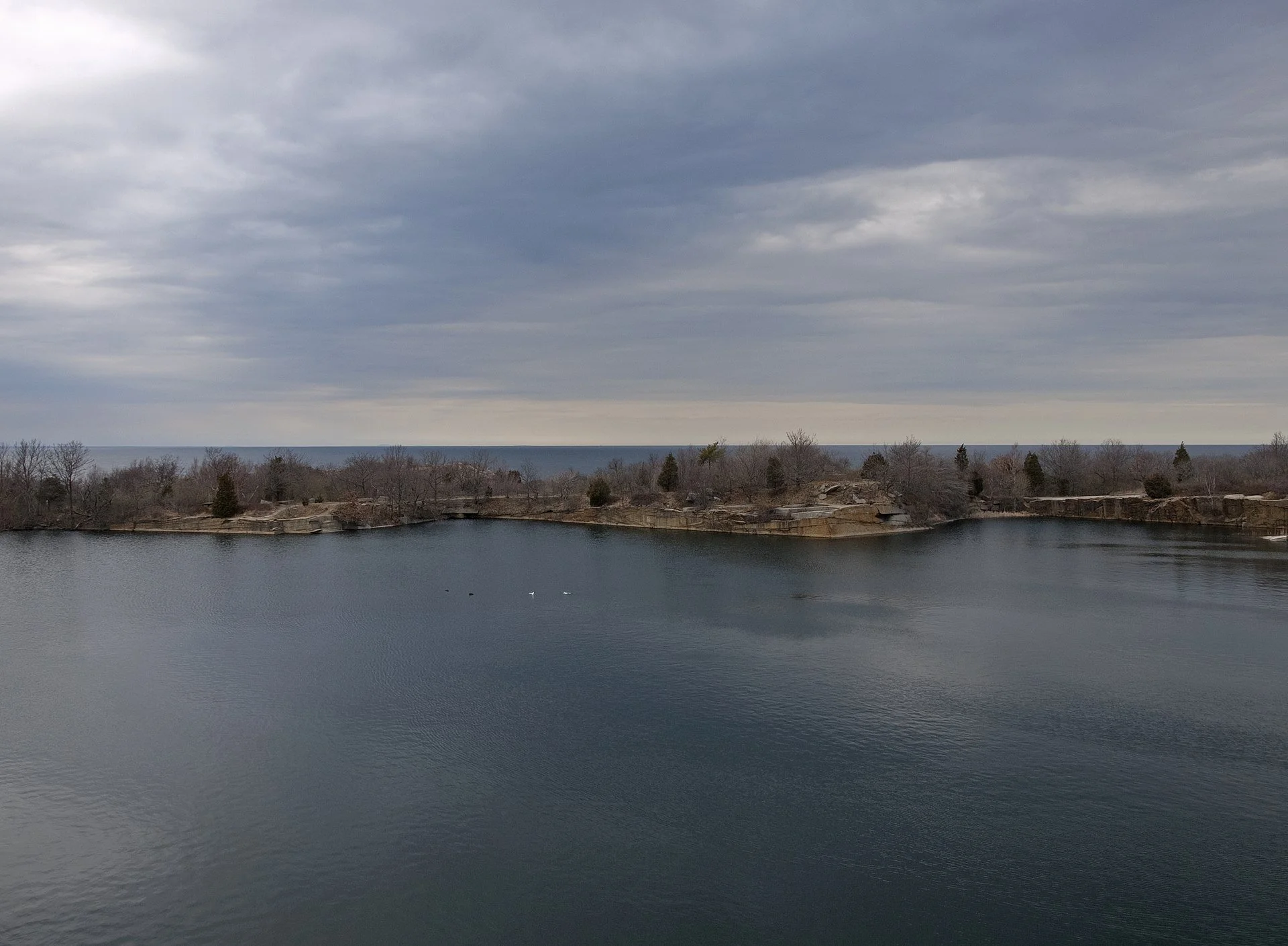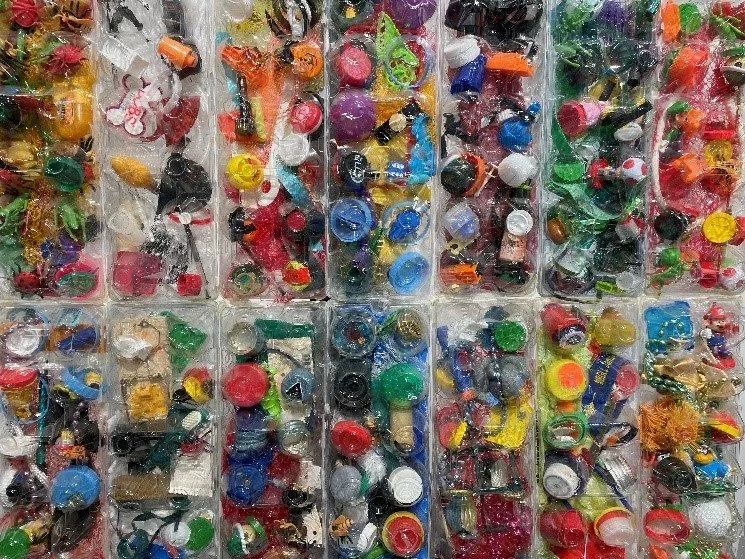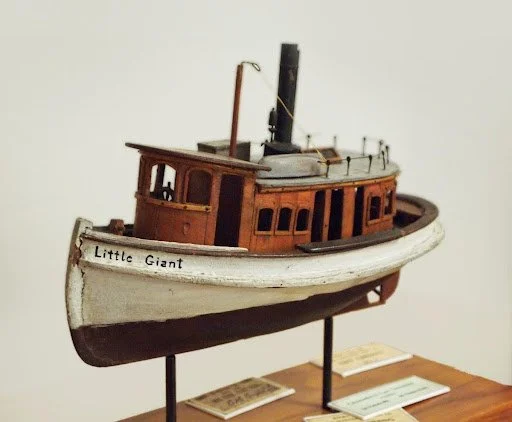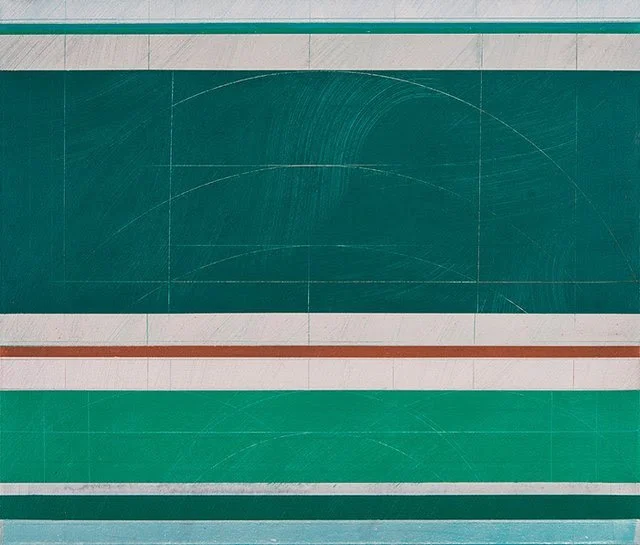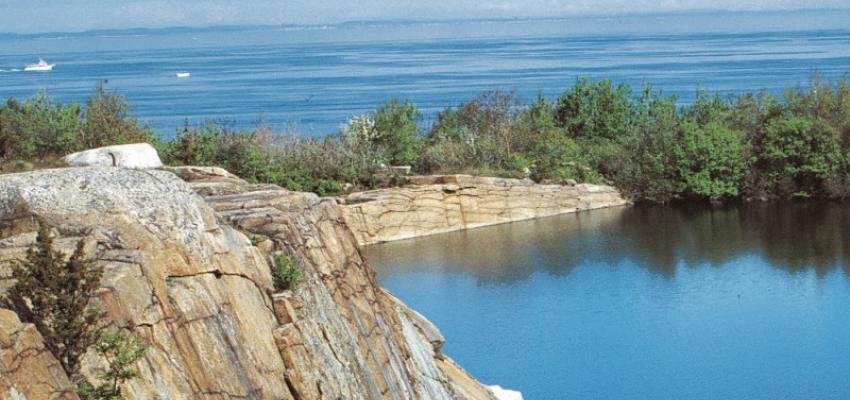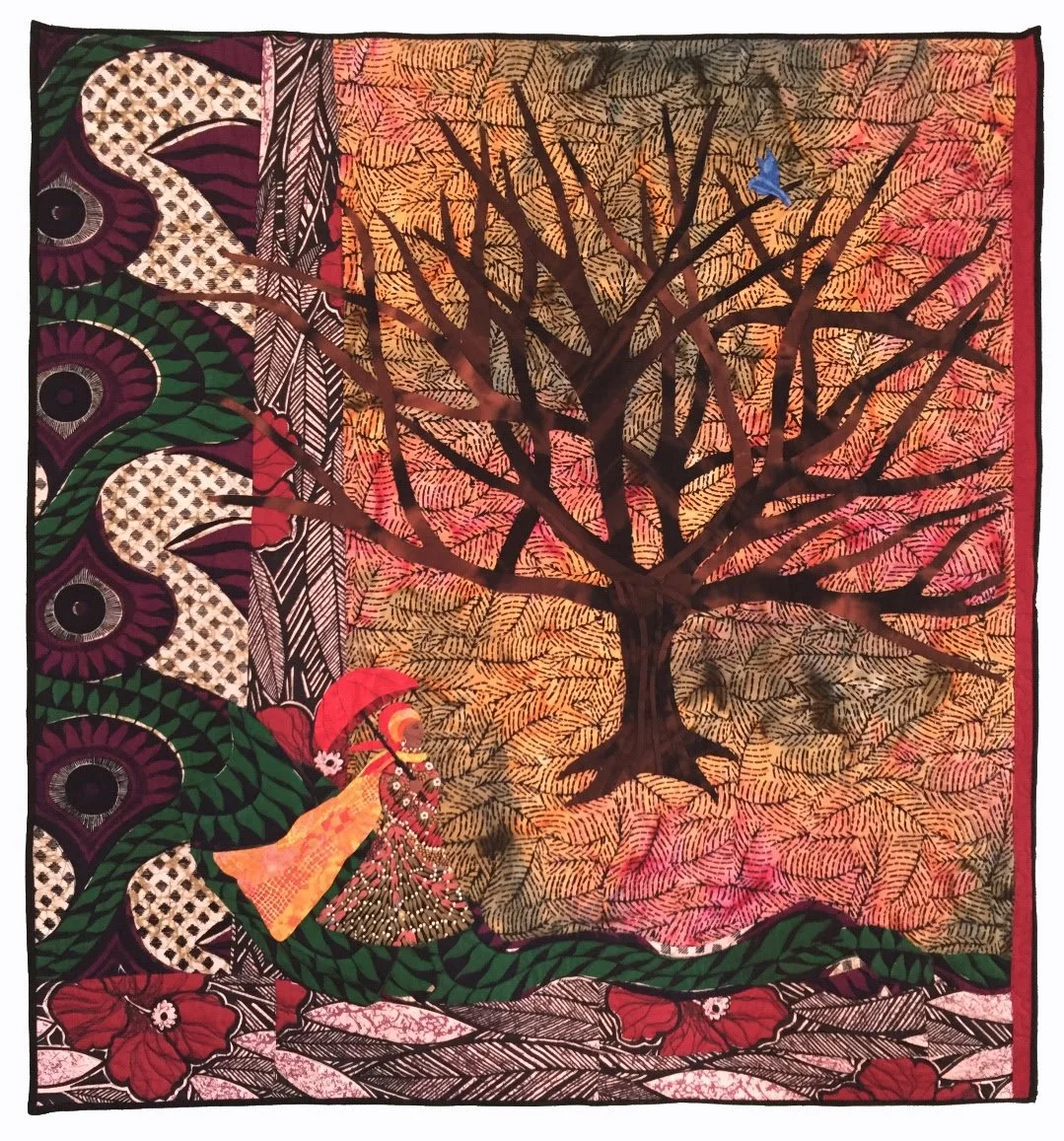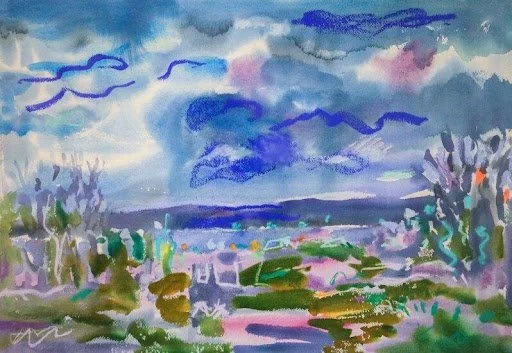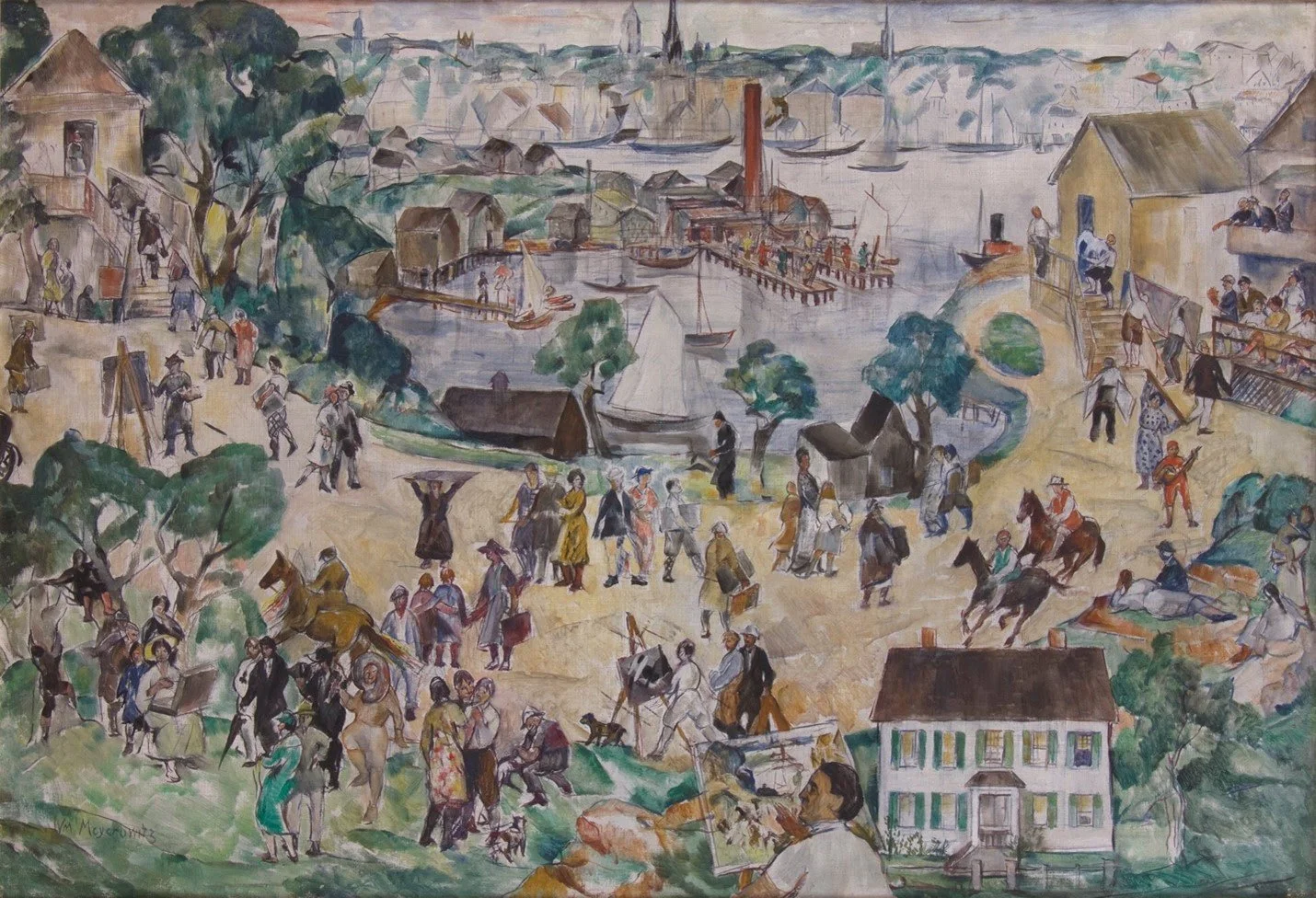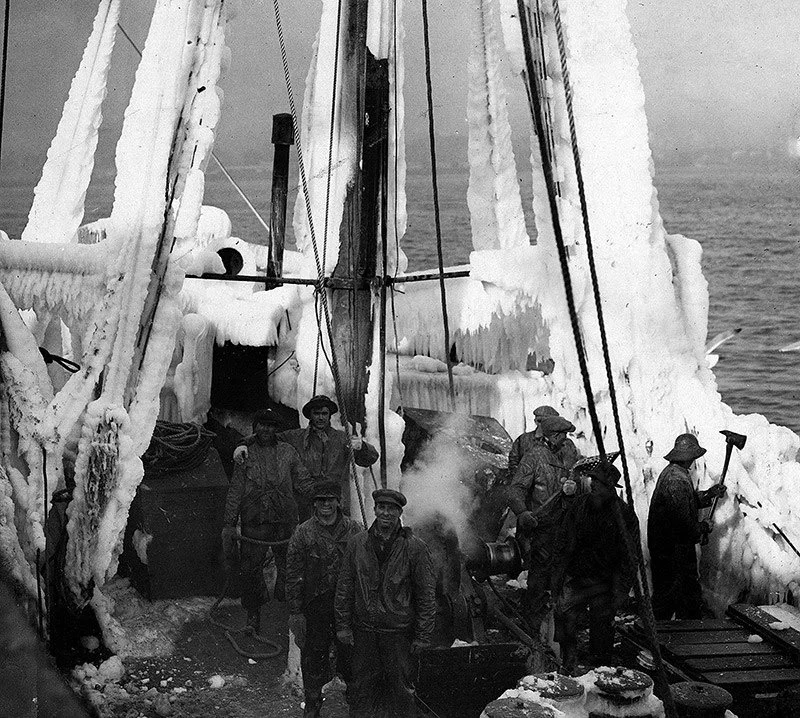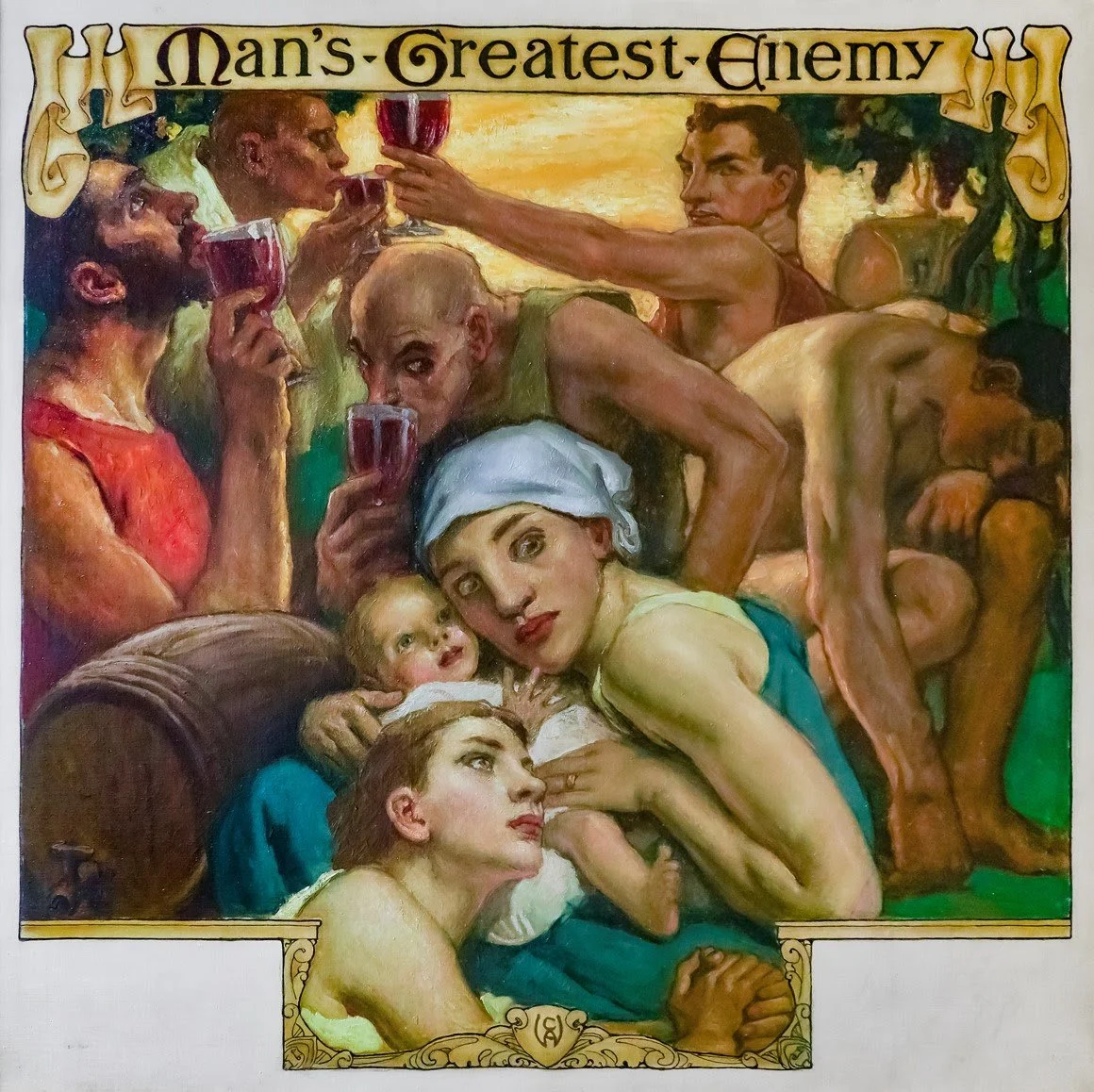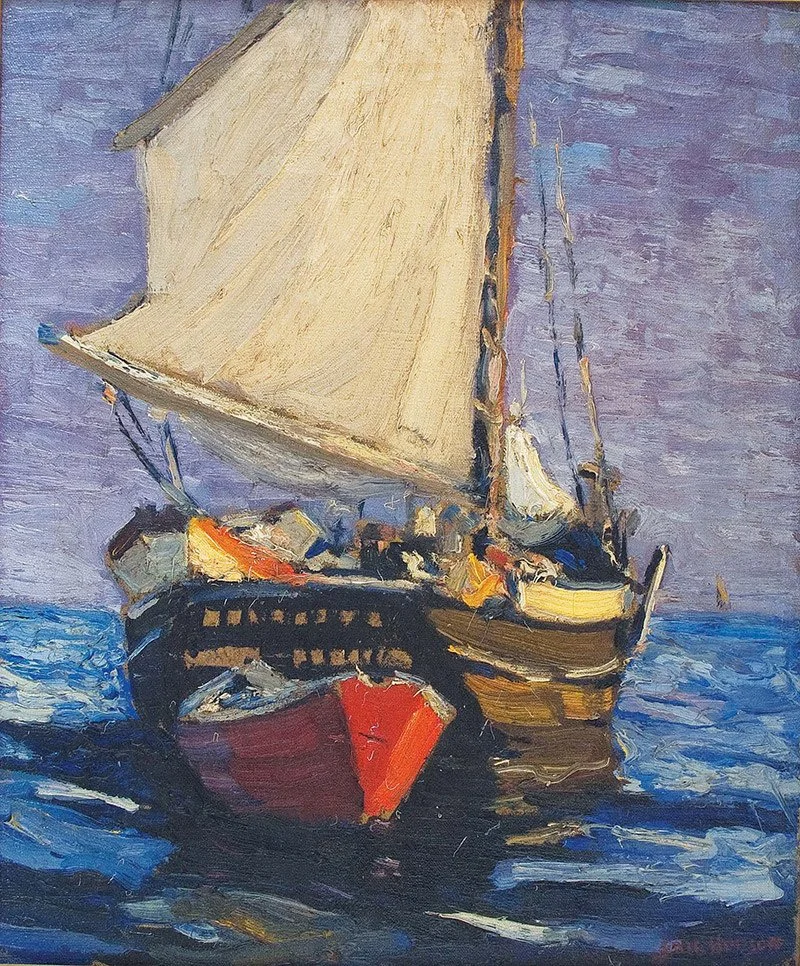Untitled photo by Tsar Fedorsky, from "The Quarry Project" series (archival inkjet printed on washi paper) in the Cape Ann Museum’s group show “QuarryArt,’’ through July 30
— Courtesy of the artist.
The museum explains:
{The} “exhibition … brings together the work of nine artists in collaboration with freelance photographer and Boston Globe reporter David Arnold. The nine artists, Tsar Fedorsky, Albert Glazier, Paul Cary Goldberg, Skip Montello, Olivia Parker, Martin Ray, Katherine Richmond, Steve Rosenthal and Constance Vallis photographed area {granite} quarries to ‘highlight economic importance of quarries centuries ago."‘
Panorama of the former quarry at Halibut Point State Park in Gloucester
— Photo by Ymblanter






